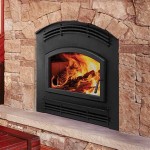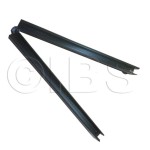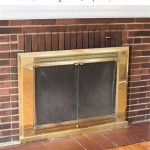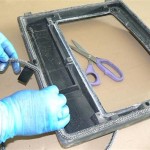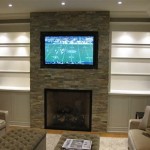Fireplace Dog Irons: Functionality, History, and Aesthetics
Fireplace dog irons, also known simply as andirons, are crucial components of a traditional fireplace. They serve a fundamental purpose: elevating firewood above the hearth floor, facilitating efficient combustion and allowing for better airflow. Beyond their functional role, fireplace dog irons are also significant decorative elements, contributing to the overall aesthetic appeal of the fireplace and the room it inhabits. Their design and materials have evolved over centuries, reflecting changing tastes and technological advancements.
The basic design of fireplace dog irons consists of two vertical supports, typically made of metal, connected by a horizontal bar or bars. The vertical supports, often referred to as “dogs,” are designed to keep logs from rolling out of the fireplace. The horizontal bar(s) elevates the wood, creating a space underneath for air to circulate. This improved airflow leads to more complete and cleaner burning, reduced smoke production, and improved heating efficiency. Some designs incorporate additional features, such as decorative finials, splayed legs for added stability, and integrated tools like pokers or tongs.
The materials used in the construction of fireplace dog irons are primarily metals, with cast iron being the most common and historically prevalent. Cast iron is durable, heat-resistant, and relatively inexpensive to produce. Wrought iron, a more refined and labor-intensive material, was also frequently used in earlier centuries, yielding intricate and decorative designs. Other metals, such as steel, brass, and bronze, have been incorporated either for structural components or decorative embellishments. The choice of material often reflects the era in which the dog irons were made, as well as the socioeconomic status of the owner.
The Functional Benefits of Using Dog Irons
The most significant benefit of using fireplace dog irons is the enhancement of combustion efficiency. By raising the firewood off the hearth floor, they allow air to flow beneath the logs, providing a continuous supply of oxygen to the fire. This results in a hotter, more consistent burn with less smoldering and reduced smoke output. A well-fueled fire, supported by adequate airflow, produces more heat, making the fireplace a more effective heating source. Furthermore, the improved combustion reduces the buildup of creosote in the chimney, decreasing the risk of chimney fires. This reduction in creosote buildup translates to safer and more efficient fireplace operation over time.
The use of dog irons also contributes to the longevity of the hearth. Without them, the direct contact between burning logs and the hearth floor can lead to cracking and damage over time. The elevated position of the wood provided by the dog irons protects the hearth from direct heat stress and physical abrasion. This protective function extends the lifespan of the hearth and reduces the need for costly repairs or replacements. In addition, the dog irons themselves help to contain the fire, preventing errant embers from escaping onto the surrounding floor.
Beyond the immediate benefits related to combustion and hearth protection, dog irons also simplify the process of tending to the fire. The elevated position of the logs makes it easier to add more wood, adjust their position, and remove ashes. This improved accessibility makes fire management more convenient and efficient. The sturdy construction of dog irons ensures that the logs remain stable and secure, reducing the risk of them shifting or collapsing, which can disrupt the fire and potentially create a hazard.
Historical Evolution and Design Variations
The history of fireplace dog irons dates back to ancient times, with rudimentary forms appearing in Roman and medieval hearths. Early examples were typically simple in design, focusing primarily on functionality. As technology advanced and metalworking skills improved, dog irons became more elaborate and decorative. The Renaissance saw the emergence of ornate designs featuring sculpted figures, intricate scrollwork, and heraldic symbols. These elaborate dog irons were often commissioned by wealthy families and served as status symbols, reflecting their social standing and artistic sensibilities.
The 18th and 19th centuries witnessed a proliferation of different styles, reflecting the prevailing aesthetic trends of the time. Neoclassical designs emphasized symmetry, proportion, and classical motifs, while Victorian-era designs were characterized by their opulent ornamentation and intricate detailing. The Industrial Revolution led to the mass production of cast iron dog irons, making them more accessible to a wider range of households. These mass-produced designs often featured simpler, more standardized forms, but still provided a functional and decorative element to the fireplace.
In the 20th and 21st centuries, dog iron designs have continued to evolve, reflecting contemporary tastes and technological innovations. Modern designs may incorporate sleek lines, minimalist forms, and alternative materials such as stainless steel or wrought iron. Some designs integrate gas-powered fireplaces, blurring the lines between traditional wood-burning models and modern heating solutions. The availability of antique and vintage dog irons also provides a diverse range of styles and historical periods for homeowners to choose from, allowing them to personalize their fireplace and reflect their own unique aesthetic preferences.
Aesthetic Considerations and Selection Criteria
When selecting fireplace dog irons, aesthetic considerations are just as important as functional ones. The design of the dog irons should complement the overall style of the fireplace and the surrounding room. For a traditional fireplace, classic designs with ornate details or antique finishes may be the most appropriate choice. In a more modern setting, minimalist or contemporary designs with clean lines and simple forms may be preferable. The size of the dog irons should also be proportionate to the size of the fireplace opening, ensuring a balanced and visually appealing composition.
The material of the dog irons can also significantly impact their aesthetic appeal. Cast iron provides a rustic and traditional look, while brass or bronze accents can add a touch of elegance and sophistication. The finish of the metal, whether polished, brushed, or patinated, can also influence the overall aesthetic. A polished finish creates a bright and reflective surface, while a brushed or patinated finish adds a more subdued and aged appearance. The choice of finish should align with the desired aesthetic and the overall style of the room.
In addition to style and material, the presence of decorative elements, such as finials, carvings, or sculpted figures, can further enhance the aesthetic appeal of the dog irons. These embellishments can add visual interest and personality to the fireplace, making it a focal point of the room. When selecting dog irons with decorative elements, it is important to consider the overall scale and complexity of the design, ensuring that it does not overwhelm the fireplace or clash with the surrounding décor. The careful selection of fireplace dog irons can transform a simple fireplace into a stunning and captivating feature of the home.

What Is The Purpose Of Andirons And Fireplace Grates

What Is The Purpose Of Andirons And Fireplace Grates

Which Size Of Andirons Or Fire Dogs Do I Need Charles Nijman

Pair Of Heavy Antique Georgian Fireside Andirons Black Cast Iron Fire Dogs C1800

A Focus On Firedogs Antique Fireplaces And Surrounds Thornhill Galleries

Fire Grate Fireplace Canopy Dog Irons Camelot Real Fires

Hand Forged Fire Dog 21 In High 17in Deep Ironmongery

Antique 1800 S Pair Steel Iron Fire Dogs Andirons Place Log

Dog Irons Open Fire Dogs By Camelot Real Fires

Large Wrought Iron Fire Dogs For The Inglenook Fireplaces Of An English Manor House Hand Forged Using Tradi Basket Fireplace Pool Designs
Related Posts

